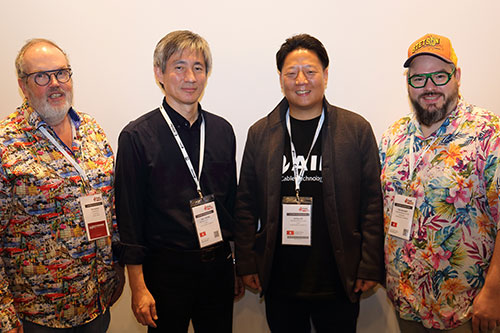We finally arrived and are greeted by a visibly good natured Serge Schmidlin. After a quick look around in the garden - of course with swimming pool – we go right to the basement, where the equipment prototypes were developed and are still found. Also still down there, we find an old model of a coil winding machine. The manufacturing of transformers is, however, carried out in a separate transformer winding plant in Geneva. In 1972, here in this basement, the first transformer was developed. It was an output transformer wound with silver wire for a 300B tube amplifier. We are walking on historic ground. The transformer is still built exactly the same way as it is seen sitting on the table down here. Also on display are individual toroidal cores, some made of ferrite and some out of grain-oriented silicon steel. Schmidlin works together with various sub-contractors from the area who manufacture parts for his equipment. In Switzerland, there are numerous small companies doing excellent work; the term "Swiss precision workmanship" must indeed come from somewhere.

It was never the original intention of Schmidlin to develop complete equipment to later sell. He simply lived out his passion. The idea came much later, when a few people had listened to his equipment and asked if they would be able to purchase such a unit. It took until 2005 for the first production series of complete equipment to arrive. Only then did Schmidlin give up his secure job as a chemist. As the name Audio Consulting suggests, Schmidlin not only manufactures hifi equipment, but also advises other big name manufacturers regarding concepts for transformers. One-third of his business is dedicated to the production of equipment for the DIY industry. Individual items are also sold to the home kit builder.

After a short tea break in the garden, we are finally led into the inner sanctum, under the attic, namely to the in-house hifi setup. The room is not even that gigantic, at least in view of the relatively large speakers. “In Switzerland, there are not such large rooms,” Schmidlin says, grinning. After taking a second glance around the room, I notice that here that not a single machine was purchased in addition - all are his own developments. Several basic principles in the design of Schmidlin's equipment are also evident: The use of wood as a component, whenever possible, and a complete power supply via batteries. Meanwhile, there were further improvements through the use of huge capacitor banks. And of course cryogenic silver cable everywhere you look.




























 |
|





































































































